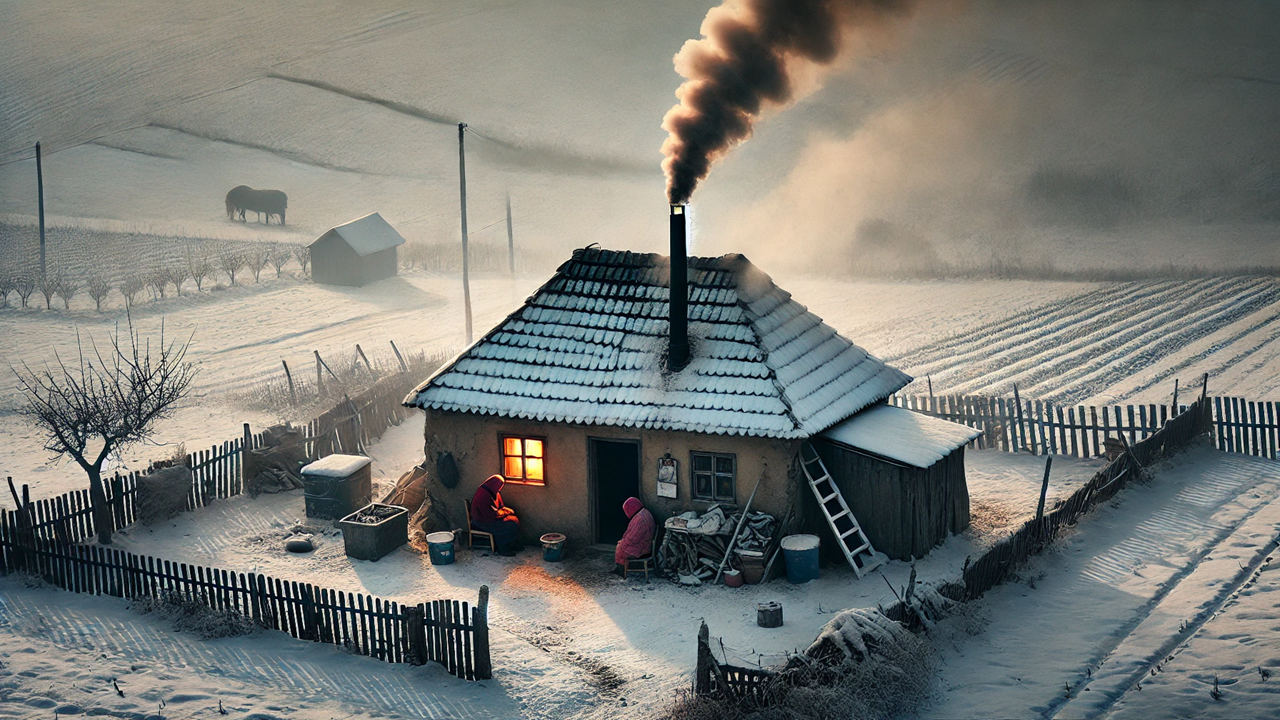Romania’s Battle with Energy Poverty: How Vulnerable Households Are Struggling to Stay Warm
A recent World Bank report, “Understanding and Addressing Energy Poverty in Romania: Exploring the Roles of Structural and Behavioral Constraints,” reveals that nearly 25% of Romanian households are experiencing energy poverty, struggling to afford basic heating, cooling, and lighting. Vulnerable groups, including the elderly and rural communities, are the worst hit. The report calls for targeted income support, energy efficiency measures, and behavioral interventions to help households transition to modern, sustainable energy solutions.

Romania’s Energy Crisis: Navigating Structural Barriers and Rising Costs
Energy poverty is not just a matter of high bills. For many Romanian families, it’s about survival—particularly in the harsh winters when inadequate heating can threaten both health and comfort. According to a recent report by the World Bank titled “Understanding and Addressing Energy Poverty in Romania: Exploring the Roles of Structural and Behavioral Constraints,” nearly 25 percent of Romanian households face some form of energy poverty. The problem is severe, impacting people’s quality of life and presenting serious health risks.
This article dives into the root causes of energy poverty in Romania, examining its impact on vulnerable communities and offering insights into potential solutions.
A Chilling Reality: Romania’s Energy Poverty Landscape
Energy poverty refers to a situation where households cannot afford adequate heating, cooling, and lighting. The World Bank report highlights that nearly a quarter of Romanian families are unable to pay for basic energy needs, forcing them to choose between essentials like food or warmth. In 2022 alone, 15.2 percent of households struggled to maintain an adequate level of warmth, while 17.8 percent fell behind on utility bills. This issue is more pronounced in rural areas, where the lack of access to natural gas networks and reliance on traditional wood-burning methods deepen the divide.
Elderly individuals and low-income families are especially vulnerable. Many of these households, already living on tight budgets, spend an overwhelming share of their income on energy. The report notes that single-elderly households and those dependent on social aid are hit the hardest. This leads to an uncomfortable winter where many cut back on energy use, risking health complications like respiratory and cardiac ailments due to exposure to cold.
Structural and Behavioral Constraints
The issue goes beyond mere affordability. Structural barriers—such as inadequate housing insulation and limited access to modern heating technologies—exacerbate energy poverty. Households using outdated heating systems, like wood or coal stoves, face higher energy costs compared to those using modern, efficient technologies. Additionally, financial constraints make it difficult for these families to invest in energy-saving upgrades.
Behavioral factors play a role too. Many people are unaware of the support programs available or are reluctant to apply due to negative perceptions and fear of complex bureaucratic processes. This lack of awareness creates a vicious cycle where people continue using inefficient energy systems because they don’t know about or trust alternative options.
The report also points out that energy-efficient renovations are more challenging in rural areas due to the scarcity of affordable options and limited local knowledge. Without interventions to bridge these gaps, millions of Romanians will continue to suffer through uncomfortable winters.
Impact of Soaring Energy Prices
The recent surge in global energy prices, exacerbated by Russia’s invasion of Ukraine, has only made things worse. The World Bank’s simulations suggest that a 40 percent increase in energy prices could push many more households into energy poverty, adding 2.3 percentage points to the already high rate. Rural families, particularly those who rely on social support, would face the brunt of these price hikes.
This increase in costs is not just a financial issue—it’s a public health crisis. Households unable to afford adequate heating or forced to use unhealthy energy sources like coal or wood face significant health risks. The stress of managing energy costs also takes a toll on mental health, leading to higher rates of depression and anxiety.
Policy Interventions: Targeted Support and Efficiency Measures
Romania has taken some steps to address energy poverty, but more needs to be done. The government has implemented energy price caps and targeted social support measures, yet these interventions lack the focus needed to tackle the problem comprehensively. The World Bank report suggests that Romania’s current approach should evolve to include more targeted income support and policies designed specifically for the most affected groups.
Programs like the National Long-Term Renovation Strategy (LTRS) and the Social Climate Fund (SCF) have the potential to make a difference. These initiatives, if properly implemented, could help improve energy efficiency and reduce costs for vulnerable households. However, to achieve their full impact, they must be complemented by clear communication strategies to increase public awareness and trust.
Moving Forward: A Holistic Approach to Address Energy Poverty
Solving Romania’s energy poverty problem requires a multi-pronged approach. The World Bank report calls for a combination of short-term social safety nets and long-term investments in energy efficiency. This includes tailoring support to the unique needs of different demographic groups and addressing behavioral barriers through community engagement and education.
Moreover, there’s a need for programs that focus on the environmental and social aspects of energy poverty. This involves promoting cleaner technologies and building the capacity of local communities to implement sustainable solutions. Without a concerted effort to address both the structural and behavioral factors at play, Romania’s most vulnerable will continue to face an uphill battle against energy poverty.
- FIRST PUBLISHED IN:
- Devdiscourse
ALSO READ
World Bank Report: Lao PDR Shows Economic Growth in 2024, but Debt Challenges and Inflation Threaten Stability
Europe & Central Asia’s Economic Resilience and Challenges: Insights from the 2024 World Bank Report
World Bank Report Urges Armenia to Prioritize Climate Action for Energy Security
Mongolia's Path to Sustainable Growth: World Bank Report Outlines Climate Risks and Transition Needs
Transforming Western Balkan Cities for a Climate-Resilient Future: Key Insights from World Bank Report










